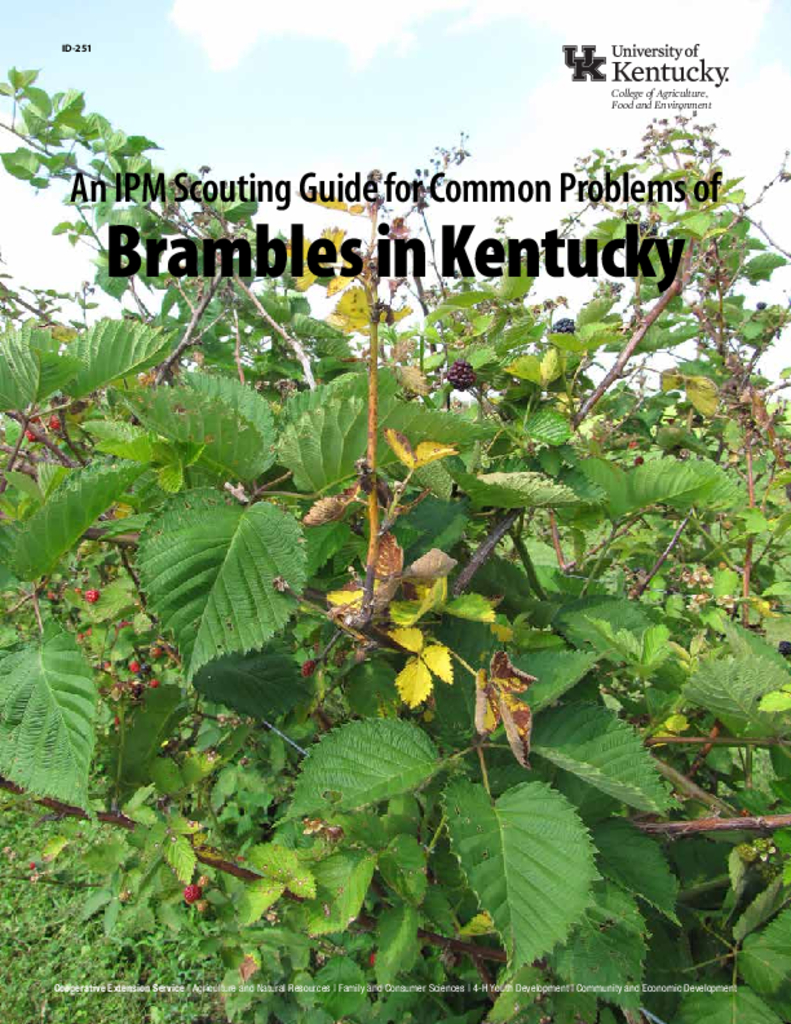An IPM Scouting Guide for Common Problems of Brambles in Kentucky
An IPM Scouting Guide for Common Problems of Brambles in Kentucky
Abstract
Long before the term "sustainable" became a household word, farmers were implementing sustainable practices in the form of Integrated Pest Management (IPM) strategies. IPM uses a combination of biological, cultural, physical, and chemical methods to reduce and/or manage pathogen and pest populations. These strategies are used to minimize environmental risks, economic costs, and health hazards. Pathogens and pests are managed (although rarely eliminated entirely) to reduce their negative impact on the crop. Scouting and monitoring for diseases, insects, weeds, and abiotic disorders helps identify potential problems before serious losses result. This is essential to the IPM approach. The key to effective monitoring is accurate identification. The images included in this guide represent the more common abiotic and biotic problems that occur in Kentucky blackberry and raspberry plantings.
Core Details
Publication Date
September 13, 2018
Categorical Details
© 2025 University of Kentucky, Martin-Gatton College of Agriculture, Food and Environment

